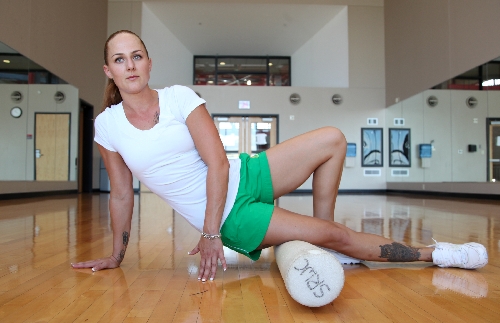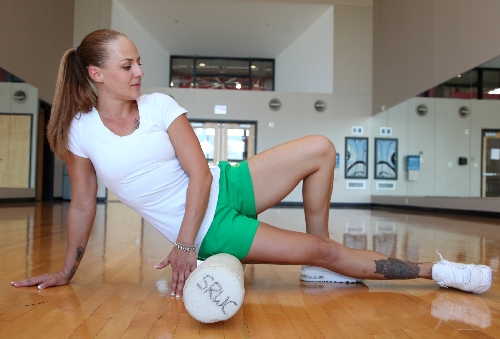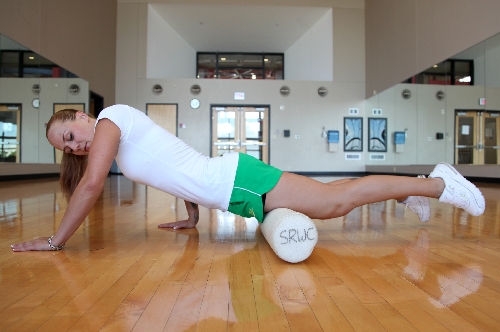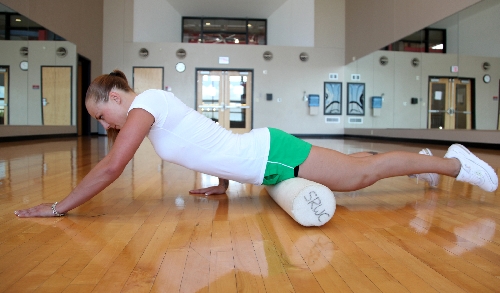Foam rolling can help muscles work properly through full range of motion




‘Ouch! That’s a solid 8 on the pain scale. That hurts and feels good at the same time? I feel it easing up now. Wow, I didn’t know that was there."
I like introducing people to the wonderful world of foam rolling. Foam rolling helps the body move better by relaxing tight muscles so they can work properly through their full range of motion.
In trainer jargon, self-myofascial release, or SMR refers to foam rolling.
SMR targets the neural side of the muscle by increasing Golgi tendon activity and decreasing muscle spindle activity. These two organs tell the brain in what position the muscle is. Foam rolling is a way of pressing the reset button on a particular muscle.
SMR also addresses the fascial system. It realigns the fibrous tissue that surrounds muscle tissue. After strain during exercise, they can become bundled and form a "knot." In short, foam rolling is a little painful, but it will help you move better both in and out of the gym
Gyms and retail stores have many kinds of foam rollers and SMR tools. Foam rollers are just that, a cylinder of foam with a specific density. If muscles are very tight, there are rollers that are less dense. Less dense hurts less. Conversely, if muscles are less tight or you’re trying to reach a deep knot, there are higher-density rollers.
You or a workout buddy also can use rolling sticks that can be used to apply very light or very intense pressure. Soft balls, tennis balls and lacrosse balls also can be used as SMR devices.
As a trainer, I use a pain scale when teaching people to work with SMR devises. Simply rate the pain you feel on a scale of 1 to 10, 1 being the lowest and 10 being the most painful. A rating of 1 will feel a little tender and a 10 is absolutely unbearable. This scale helps quantify a feeling and tell me, as a trainer, how tight a particular muscle group is.
My masseuse informed me that pain above an 8 makes it difficult for the muscle to relax. The muscle wants to tighten instead of relax. Muscles enjoy anything up to an 8. If you find a knot above an 8, then ease up on the pressure.
Those individuals who are very tight will have numerous tender spots that vary in degree along the entire length of a muscle group. After a few weeks of rolling, that number will decrease to one or two and the intensity of the pain scale also will decrease.
For example, many new clients have tight calf muscles as indicated by a squat assessment. I show them how to foam roll. Starting at the bottom of the calf, they feel tender spots they rate as 1 or 2 on the pain scale.
Further up the calf the tenderness increases to 4 and 5 and they might have one spot that they feel deserves a 9. After a week or two of SMR, those 1 and 2 spots don’t register as painful. The 4 and 5 areas are down to 1 or 2 and that super painful 9 is now a 5 or less.
Rolling and SMR can be done as a warm up and cool down and should be followed with a static stretch of the same muscle rolled. Rolling is a good thing to do on a recovery or off day. Watch TV while you roll a few different muscle groups. Rolling could easily take 20-30 minutes on an off day. Foam rolls are available at most sporting goods stores.
Muscles that are most likely to be tight are calves, especially if you wear shoes with heels or wedges. The outer thigh is typically tight for frequent runners and cyclists. The quadriceps (front of the thigh) can be tight if the hips are weak. Ask a trainer to assess your form and advise you of areas you need to work.
Chris Huth is a Las Vegas trainer. You can contact him at 702trainer@gmail.com. Before beginning any exercise program, consult your physician.












